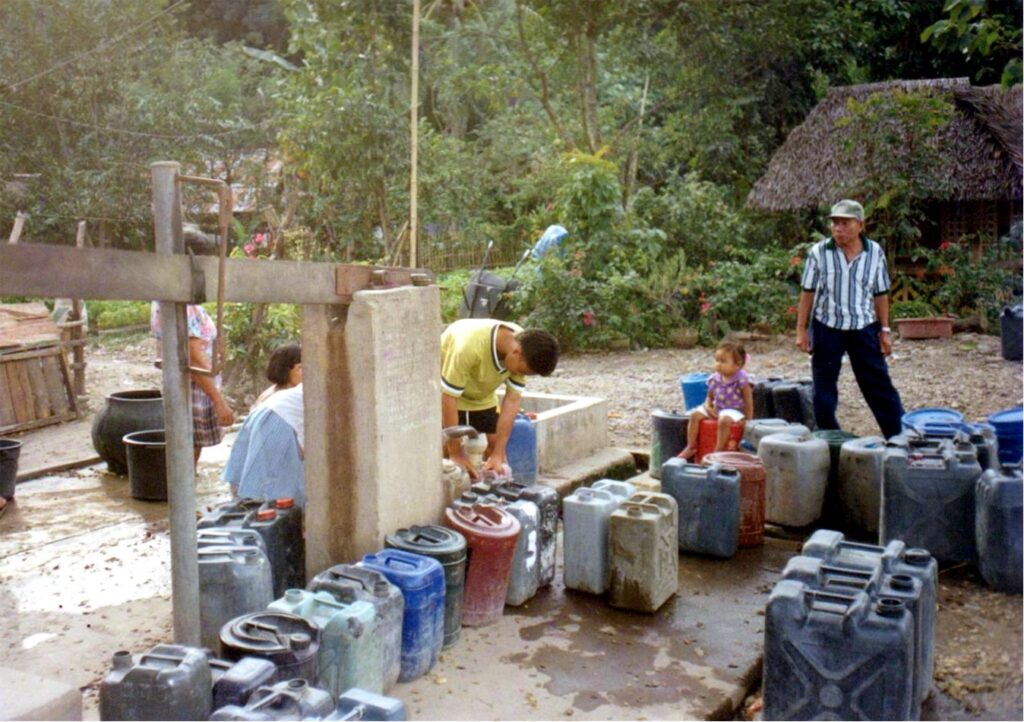Text and Photos by Henrylito D. Tacio
When it comes to climate change, no one can deny it anymore. During the 11th International Coral Reef Symposium (ICRS) held in Fort Lauderdale, Florida (which I attended), Dr. Simon Donner of the University of British Columbia embarked on a metaphor for climate change.
“The climate is like this big ship. We are all on this big ship and the problem is once you hit the brakes it takes a long time for the ship to actually slow down and stop,” Dr. Donner told the participants.
“In our case the ship is the Titanic and we are going to hit the iceberg. It is going to be almost impossible for us not to hit the iceberg at this point. What we need to do is everything we can to put the brakes on, to slow the ship down and move the iceberg a little bit. The time for emission reductions isn’t as much now as it was 20 years ago.”
Climate change refers to long-term shifts in temperatures and weather patterns. These shifts may be natural, but since the 1800s, human activities have been the main driver of climate change, primarily due to the burning of fossil fuels (like coal, oil, and gas), which produces heat-trapping greenhouse gases.
To preserve a livable climate, respected scientists from all over the world agreed that greenhouse gas emissions must be reduced to net 0 by 2050.
Oftentimes, when people talk about climate change, sea-level rise, food shortage, water crisis, and biodiversity extinction are mentioned. Unknowingly, climate change has also far-reaching impacts on human health and well-being.
“Changing temperature and rainfall patterns impact crop yield, food and water security, and nutrition,” wrote Mariana Simoes, Elena Villalobos, and Nadia Rasheed in a paper published by the United Nations Development Program (UNDP).
“The increased frequency and intensity of extreme events can cause not only injury, but also increase the risk of water-borne diseases, diseases associated with crowding, and vector-borne diseases, as well as psychological and emotional distress related to traumatic events.”
Examples of water-borne diseases are diarrhea, hepatitis A and E, and cholera. Diseases associated with crowding include measles, meningitis, and acute respiratory infections. Malaria and dengue are examples of vector-borne diseases.

“(The impacts of these diseases and other health problems) will be felt especially by vulnerable populations, including children, the elderly and low-income communities,” the three authors wrote.
The Geneva-based World Health Organization (WHO) estimates that climate change will cause an additional 250,000 deaths each year between 2030 and 2050, just considering risks from malnutrition, malaria, diarrhea, and heat stress.
“Health impacts from climate change are exacerbated in countries where health systems already struggle to manage existing health risks, and capacity to adapt to additional climate change-related health risks is limited,” the three authors pointed out.
“Without effective action, climate change is going to be larger and more difficult to deal with than we thought,” said Dr. Chris Field, who was a coordinating lead author of the report issued by the Nobel-winning Intergovernmental Panel on Climate Change (IPCC).
Health scientists pointed out that should the earth’s thermostat continue to rise, human health problems will also become more frequent and severe. “While health emergencies hit quickly, climate change is a slow-motion disaster,” reminds Dr. Tedros Adhanom Ghebreyesus, WHO Director-General.
Dr. Paul Epstein, in a study entitled Human Health and Climate Change, said that a warming climate, compounded by widespread ecological changes, may be stimulating wide-scale changes in disease patterns.
According to him, climate change could have an impact on health in three major ways by (1) creating conditions conducive to outbreaks of infectious diseases; (2) increasing the potential for transmissions of vector-borne diseases, and the exposure of millions of people to new diseases and health risks; and (3) hindering the future control of the disease.
June 23, 1988, marked the date on which climate change became an international issue. In landmark testimony before the US Senate Energy and Natural Resources Committee, Dr. James W. Hansen told the audience that “with 99% confidence,” the recent sharp rise in temperatures was a result of human activity.
“Global warming has reached a level such that we can ascribe with a high degree of confidence a cause-and-effect relationship between the greenhouse effect and observed warming… In my opinion, the greenhouse effect has been detected, and it is changing our climate now,” said Hansen, then the director of National Aeronautics and Space Administration’s Institute for Space Studies.
Almost two-thirds of over 1.2 million people surveyed around the world by the United Nations Development Program say that climate change is a global emergency, urging greater action to address the crisis.
The Philippines, an archipelago of more than 7,000 islands, is one of the most affected countries when it comes to climate change. Situated in the Ring of Fire, the country is already suffering from natural calamities like earthquakes, typhoons, floods, landslides, droughts, and volcano eruptions. Climate change will further aggravate these disasters.
“We are facing the greatest environmental challenge of our generation,” states the Climate Change Commission (CCC), a government body affiliated with the Office of the President.

